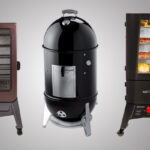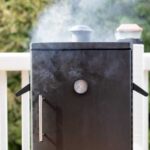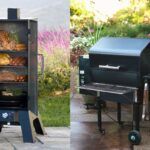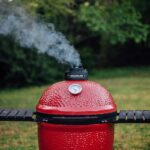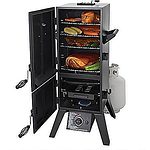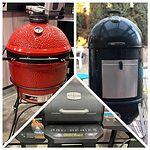How Does A Smoker Work? (BBQ Chef’s Answer)
Have you ever been curious about how a smoker works? Whether you’re an aspiring chef, or just someone who has always wanted to know the science behind smoking food, this article is for you! We’ll break down all the basics of smokers, what goes into them and why they work so well.
From traditional wood burning pits to electric and gas powered models- there are many ways to smoke your favorite foods. But no matter which type of smoker you choose, one thing remains true: it takes skill and knowledge to get that mouthwatering smoked flavor in your dishes. So if you want to learn more about smoking techniques, keep reading; we’ve got everything you need to become an expert at using a smoker!
Overview Of The Smoking Process
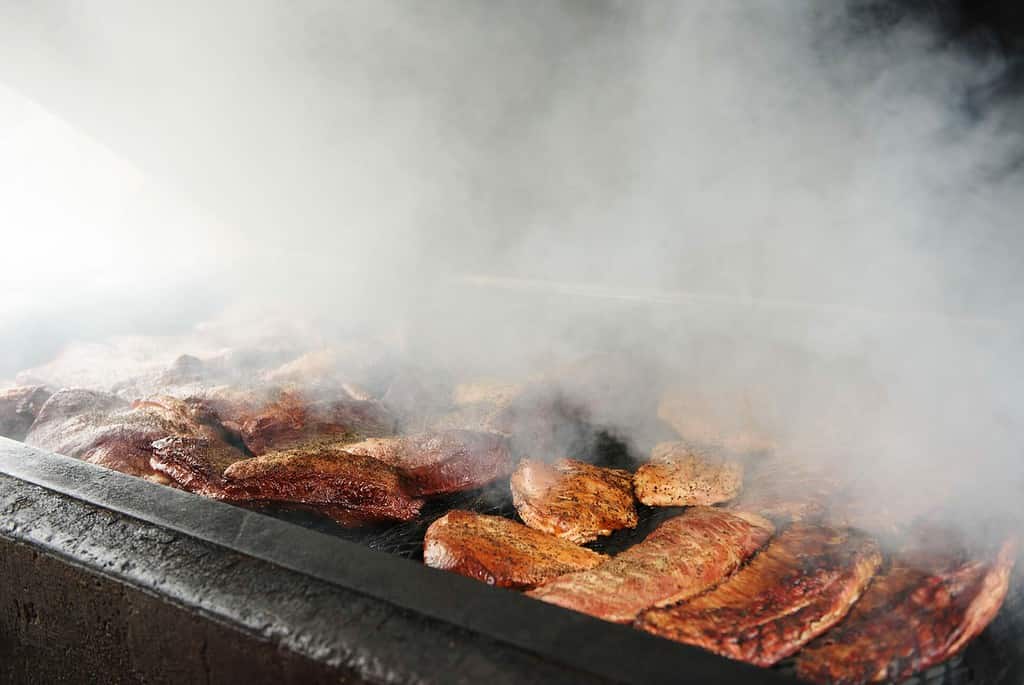
Smoking is a great way to cook your food with low temperatures and lots of flavor. It’s an art form that I’ve grown to love, and electric smokers make it easier than ever.
The smoking process is all about slow cooking at lower temperatures, which helps the wood chips or charcoal impart their flavor on the food.
Electric smokers are easy to use because they automatically regulate temperature and smoke production so you don’t have to worry about over-smoking your food. Charcoal smokers can also be used for smoking but require more attention from the cook since you need to constantly adjust the airflow and fuel source in order for it to stay lit. These types of smokers are usually larger than electric ones too, but give off a really intense smoky flavor due to higher heat levels. You’ll also need some kind of water pan in both types of smoker as this will keep moisture inside during the smoking process, making sure your meats get nice and tender without drying out!
No matter what type of smoker you choose, taking time and being patient throughout the whole cooking method is key – rushing things won’t do any favors when it comes to good smoked BBQ! With an eye on temperature control, plenty of wood chips or charcoal, plus a trusty water pan by your side; you can create delicious meals every single time.
Different Types Of Smokers
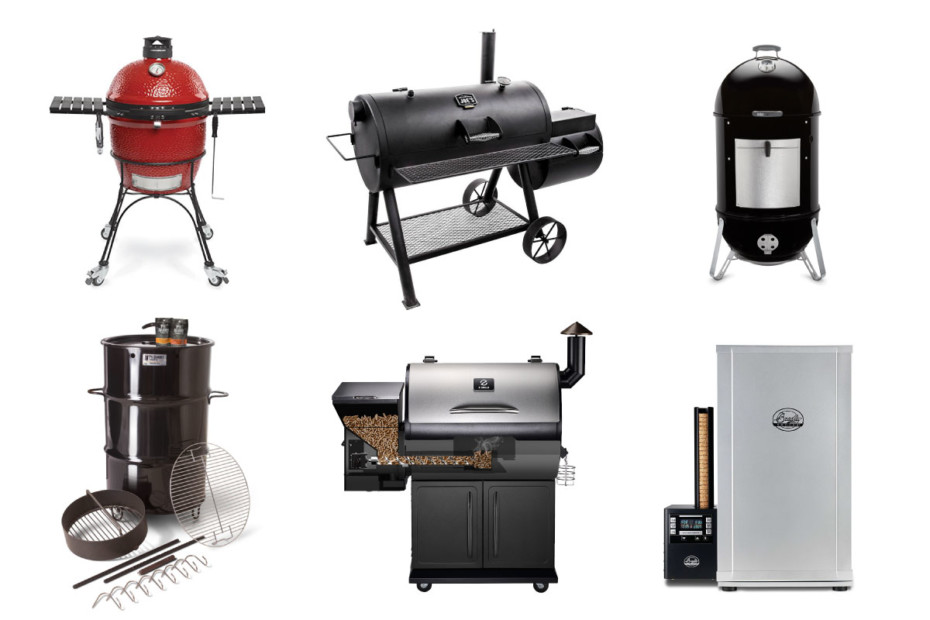
When it comes to smokers, there are three main types – charcoal, electric and gas. Charcoal smokers are great for those who like to keep things old-school, as they require charcoal and wood chips to get that classic taste. Electric smokers are super easy to use, as all you have to do is plug it in and get smokin’! Gas smokers are the perfect middle ground, giving you the convenience of gas with the flavor of wood chips. So if you’re a smoker, there’s something for everyone!
Charcoal Smokers
Ahhh, nothing beats a smoky flavor from the charcoal grills! There’s something magical about cooking with that special heat source. Whether you’re using lump charcoal or wood chunks, different types of smokers will give your food an incredible taste.
Take for example the classic charcoal smoker. This type of smoker uses a large cooking chamber where smoke and heat circulate around the food to infuse it with delicious flavors. Plus, temperature control is easy thanks to adjustable vents on top and bottom of the grill. You can easily adjust the airflow depending on how much smoke you want in your food.
So if you’re looking for some serious smoky flavor, don’t settle for anything less than a deluxe charcoal smoker—you’ll be blown away by its results!
Electric Smokers
Electric smokers are an awesome way to get that smoky flavor without the hassle of starting a fire. They use electricity to heat up an internal heating element, which then circulates hot air around your food. Not only is it easy to control the temperature and cooking time, but you can also add wood chips or chunks for even more delicious flavors! Plus, electric smokers usually come in two types: water smokers and vertical smokers.
Water smokers provide intense smoke with moist heat while vertical smokers provide less smoke but still give off great flavor. Whether you’re using an electric smoker or one that uses charcoal or wood, there’s no denying they offer some serious flavor-packed options when it comes to smoking meat, fish or veggies! So if you’re looking for mouthwatering results without all the fuss, why not try out an electric smoker? You won’t regret it!
Gas Smokers
Gas smokers are the perfect choice for those who want the convenience of an electric smoker but with the intense smoky flavor of a charcoal or wood smoker. Gas smokers use propane to heat the internal heating element, which then circulates hot air around the food. This provides a consistent, even heat that’s great for slow-cooking meats and veggies. Plus, you can control the temperature more easily and adjust it as needed.
In addition, the smoke produced by a gas smoker is very intense, giving your food a bold, smoky flavor that can’t be matched. So if you’re looking for the perfect balance of convenience and flavor, gas smokers are your go-to!
How A Pellet Smoker Works
Using a pellet smoker is the easiest way to get that delicious smoky flavor in your food. This type of smoker uses electric heating elements and compressed wood pellets, allowing you to control the temperature with precision. It’s perfect for those who don’t have time (or patience) to tend to charcoal or gas grills. Plus, it produces less smoke than other types of smokers like the Weber Smokey Mountain or drum smokers.
Kamado grills offer an interesting alternative for smoking enthusiasts looking for something different. Unlike traditional solid fuel smokers such as charcoal or natural gas, kamado grills are ceramic ovens which use indirect heat and retain moisture better during cooking. They can also be used as conventional barbeque grills, but their ability to cook low-and-slow at consistent temperatures makes them ideal candidates for smoking large cuts of meat and poultry.
Whichever type of smoker you choose – whether it’s electrical, gas, charcoal or kamado – you’ll want one that gives you plenty of space to work with so you can fit larger pieces of meat and still maintain even cooking temperatures throughout the chamber. Choose wisely and make sure it fits your needs before investing in any piece of equipment for outdoor cooking!
How A Charcoal Smoker Works
If you’re looking for that classic smoke flavor, then a charcoal smoker is the way to go. Traditional smokers like these are perfect for cooking up pork shoulder, brisket and other delicious food items. These BBQ smokers don’t require any fancy technology or special skills – just wood splits, lump charcoal and patience!
The first step to smoking with a charcoal smoker is adding fuel to your firebox – light some lump charcoal using kindling wood and wait until it’s hot enough. When it reaches about 250°F (121°C), add in your favorite hardwood splits. This will give off a steady flow of smoke which will help impart lots of smoky flavor into whatever you’re cooking.
Once the temperature inside your cooker stays around 225-250°F (107-121°C) you can start loading in all your goodies – ribs, pork shoulder, brisket etc. Just make sure to check the internal temperature regularly so none of your food items overcook. With a little bit of practice, you’ll soon be turning out amazing dishes from your trusty charcoal smoker!
Utilizing Smoker Styles

I’m sure you’ve heard of smokers before, but do you know the different types of smokers? From electric, charcoal, and pellet smokers, each one has its own unique set-up process. And, let me tell ya, it’s no walk in the park! But with a bit of know-how, you’ll be smoking like a pro in no time. So, let’s dive into the different types of smokers and how to get them set-up properly.
Stypes Of Smokers
When it comes to cooking with a smoker, there’s no shortage of options. From vertical smokers and charcoal grills, to gas smokers and kettle grills, the choices can be overwhelming! But don’t worry – each style has its own set of advantages that make them unique. Let’s take a look at some popular types of smokers so you can decide which one is right for your backyard barbecue needs.
First up on our list are offset smokers. These bad boys use wood or charcoal as fuel and have an enclosed chamber for the smoke to flow through before reaching the food on top. This gives the food a smoky flavor without burning it directly over flames. They’re also great for slow-cooking larger cuts of meat like brisket or pork shoulder.
Another option is barrel smokers, which provide even distribution of heat throughout the entire chamber due to their design. Charcoal briquettes are usually used in these types of smokers since they create more consistent temperatures than other fuels such as wood chips or pellets.
Finally, we have wood pellet smokers and gas smokers. Gas units offer convenience because they’re powered by propane tanks, while wood pellet smokers only require adding fresh pellets every few hours during long cooks when using high temperatures – making them perfect for competition BBQ teams who need to produce large amounts of food quickly! With so many different styles available, there’s sure to be something out there that will fit your smoking needs perfectly – now all you have to do is get cookin’!
Smoker Set-Up
Now that we’ve gone over different types of smokers, it’s time to talk about setting one up! The first step is choosing the right grill grate. This will depend on the type of smoker you choose and what kind of food you’re looking to cook – larger cuts like brisket or pork shoulder might require a wider grate than burgers or sausages.
Once your grill grate is in place, you can begin adding indirect heat by placing hardwood pellets, charcoal briquettes, wood chips, or gas tanks into the firebox. Depending on your needs, low and slow cooking for longer periods of time may require more fuel.
If using an offset smoker with a water pan, be sure to fill it up before lighting any fires so that steam from boiling water adds flavor and moisture to the smoke chamber. Lastly, if possible try investing in a good quality stainless steel smoker as these tend to retain heat better and provide more consistent temperatures throughout their chambers. So don’t delay – get out there and start smoking those delicious meats today!
Smoking Techniques And Strategies
When it comes to smoking, controlling the heat and airflow are key. It’s like a dance between the smoker and the flame! Keeping the heat just right can be tricky, but the reward of a perfectly smoked dinner is worth the effort. And don’t forget the airflow – without it, your dinner will be a dud!
Regulating Heat
When it comes to regulating the heat when smoking, temperature probes are key. With a PID controller and precise temperature readings from your probe, you’ll be able to maintain consistent temperatures for long smoking sessions – no matter whether you’re using wood fires or charcoal.
High temperatures can quickly take over if air intake is not monitored properly, so I always keep an eye on my vents and adjust as needed. Less air means lower temps while more airflow increases them – tweak accordingly until you find that sweet spot! When done right, your smoker will be running like a well-oiled machine with delicious results every time.
Airflow Control
Now that we’ve got our temperature under control, let’s talk about airflow. When it comes to smoking techniques and strategies, controlling the air flow is key. With pellet grills, gas grills and offset smokers, you need to make sure the vents are open or closed just right – too much air can cause temperatures to spike, while not enough won’t get your fire going for a long time.
Cold smoke methods require even more precision when adjusting airflow because lower temperatures often mean less oxygen intake needs to be allowed in order for the smoke to last longer. Solid-fuel smokers usually have secondary ports that allow extra air into the smoker so you don’t burn through your fuel too quickly – adjust those accordingly as well! Learning how to control the airflow of your smoker takes practice but once mastered you’ll find yourself with delicious recipes every time.
No matter which type of smoker you’re using, always keep an eye on the vents and adjust them according to what flavor profile you’re looking for; a few minor tweaks could turn average results into mouth-watering masterpieces!
Smoker Care And Maintenance
No matter what type of smoker you have, there are some basics to follow when it comes to caring for and maintaining your smoker. Let’s take a look at Steve and his experience with smoking meat in his backyard.
Steven, a friend of mine, recently purchased the best smoker on the market and he was eager to get cooking! He made sure that the main chamber of the smoker was preheated to the correct temperature before adding in any food. To ensure accuracy, most smokers come with built-in thermometers so you can easily monitor the internal temperature while cooking.
After reaching the ideal cooking temperate, he added in different types of wood chips depending on what kind of flavor profile he wanted to achieve. The process took longer than expected but eventually all of his meats were perfectly cooked through using this method.
Finally, after enjoying his delicious smoked creations Steven had one last step: cleaning out the ashes left behind from burning wood chips during the cooking process. Taking time to do this helps keep your smoker functioning correctly and ensures optimal safety each time you use it.
The Difference Between Smoking And Barbecuing
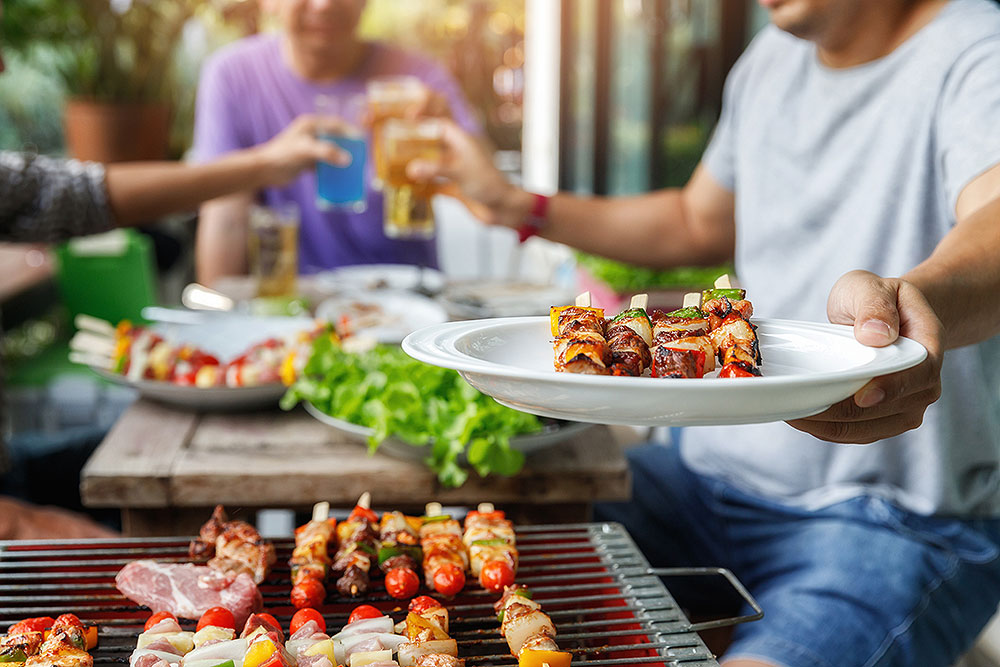
Smoking and barbecuing are two very different techniques used to cook food. When smoking, you get a subtle smoky flavor from the wood chips, whereas with barbecuing the flavors come from the charring of the fuel source. The fuel source for smoking is usually wood chips, whereas barbecuing usually uses charcoal or gas. It’s like the difference between a campfire and a bonfire–one is smoky and subtle, the other is loud and intense.
Smoke Flavors
Ah, the delicious smell that comes from a smoker or grill – it gets your mouth watering and you can’t wait to take a bite! Whether you’re into smoking or barbecuing, there are some big differences between these two cooking techniques. Let’s dive in and talk about smoke flavors specifically when it comes to smokers and grills.
The type of meat is going to matter when deciding which method to use for flavor. If you want juicy ribs or pulled pork, then using an electric smoker or horizontal smokers will be better than propane grills. But if you’re looking for smoked salmon or jerky, then cold smoking with a dedicated smoker will give you the best results. The key here is understanding what type of wood chips you need to put inside each device as this will determine the flavor profile of the food after it has been cooked.
No matter how your tastes run, whether you prefer smoky meats from a barbecue pit or lighter fare from an electric smoker – one thing’s for sure: You won’t be disappointed by either option. So get out there, find yourself a proper smoker grill, light up those coals (or turn on that electricity), and let the good times roll!
Fuel Sources
When it comes to smoking and barbecuing, there are a few key differences when it comes to fuel sources. If you’re looking for juicy ribs or pulled pork that can only be achieved with smoke flavoring, then using an electric smoker or horizontal smokers is the way to go.
Indoor meat smokers are great for this kind of food because they give off less smoke and have an intake baffle for more direct contact between the wood chips and your meal. On the other hand, if you’re looking for something like smoked salmon or jerky, then cold smoking in a dedicated smoker will get you the best flavor results.
Pork butt cooked on a propane grill might not achieve quite as much smoky goodness as these other methods, but sometimes convenience trumps all else! Of course, no matter what type of food you want to cook up, having the right equipment makes all the difference – so don’t skimp out on investing in quality gear!
The Difference Between Smoking And Grilling
Grilling is all about the heat and that’s why the temperature of your grill is so important. You want to get it hot enough to give your food that classic charred flavor, but not too hot that it burns. On the other hand, smoking is all about the flavor. You want to get that smoky taste that only comes from burning the right type of wood or charcoal. The type of fuel you use is key too, whether it’s charcoal, gas, or wood chips. Ultimately, grilling and smoking are two different cooking techniques, each with their own unique flavors and textures. So, it’s important to get the temperature and fuel source just right for the perfect meal.
Grill Temperature
Grilling and smoking are two vastly different cooking methods when it comes to temperature. Grilling requires high temperatures and short cook times, while smoking requires you to cook foods at lower temperatures over a longer period. To get the best flavor and texture out of connective tissue-rich foods, like hot dogs, you must use a smoker.
Smoking meat with a smoker is a great way to get the most out of your food. Low-and-slow cooking helps break down the connective tissues, resulting in more tender and flavorful food. Plus, it gives you more control over the temperature so you can achieve the perfect balance of smoke and heat.
The contrast between grilling and smoking is quite staggering. Grilling is a fast and convenient way to cook, but smoking is a more involved process that results in more flavorful and delicious food. If you’re looking for the best flavor and texture out of your meats, then smoking them with a smoker is the way to go.
No matter what method you choose, both will provide great results if used correctly and monitored closely throughout your cooking session – especially considering that some recipes may require up to 12 hours or even longer depending on particular smoker you’re using! So make sure to keep an eye out on your thermometer so that you don’t overcook (or undercook) your favorite dishes!
Smoke Flavor
Grilling and smoking are two distinct techniques that create different flavors. Smoking results in a deeper and richer smoky flavor than grilling, making it an increasingly popular way to prepare delicious dishes. People across the US are discovering the unique taste of smoked food and all the creative recipes you can make.
From the classic BBQ to inventive new ideas, smoking gives you the opportunity to explore a wide range of flavors. And with the right smoker, you can make a meal that’s sure to please everyone. So if you’re looking to add a delicious smoky flavor to your meals, give smoking a try!
Fuel Source
Now that we’ve discussed the smoke flavor, let’s look at what fuels these two grilling techniques. Smoking and grilling require different kinds of fuel sources to work.
With smoking, you’re usually using a wood-burning stove or charcoal grill with wood chips for added smokiness. On the other hand, when it comes to grilling, most people use propane gas or even briquettes as their main fuel source. This can be great if you want to get your food cooked quickly without having to wait around for coals to heat up like they do in smokers.
Plus, some modern gas grills have temperature control features that make them easy to use even for beginners! No matter which way you decide to go though – whether it’s smoking or grilling – there are plenty of options out there that will give you delicious results every time. So don’t be afraid to experiment and find what works best for you and your taste buds!
Using An Outdoor Smoker
Using an outdoor smoker can be a really fun and satisfying experience. I love the way that the smoke wraps around whatever it is you’re cooking, giving it a deep smoky flavor that just can’t be achieved any other way.
Setting up your smoker is pretty straightforward as well – there’s not much to it beyond getting the fire going and setting up the food for smoking. You’ll want to make sure you have plenty of wood chips or chunks on hand so that you can get plenty of smoke rolling into the chamber for maximum flavor impact. It also helps to keep some water in the pan beneath the grill grates, which can help cool down the temps if they start getting too hot.
Once your fire is burning nicely and your food is all set up, close up the lid on your smoker and let everything cook away until it’s done! Just remember to check in periodically throughout this process, making small adjustments as needed so that everything cooks evenly with no flare ups or temperature spikes. With a little bit of practice, you’ll soon master how to use an outdoor smoker like a pro!
Direct Vs. Indirect Heat Smokers
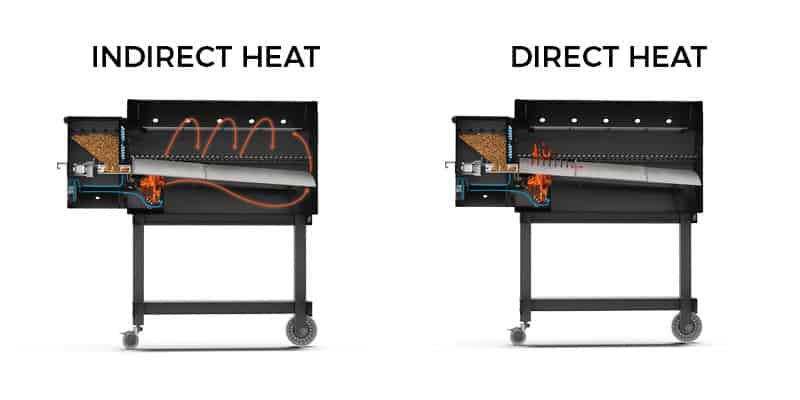
When it comes to smoking food, there’s two main ways to go about it: direct heat and indirect heat. Direct heat is like throwing your meat on a hot grill – it cooks fast and hot. Indirect heat is more like slow cooking in an oven – the heat is lower but it takes longer to cook. Both methods have their pros and cons, so it’s up to you to decide which works best for your meal. Let’s fire up the discussion and take a closer look at direct and indirect heat smokers.
Direct Heat
If you’re the type who likes to get up close and personal with your smoking process, then direct heat smokers are for you. They allow you to really focus on getting that perfect smoky flavor in whatever it is you’re cooking. Basically, these smokers use a flame or charcoal directly below the food to cook and smoke it simultaneously.
This gives you more control over the temperature of the smoker since you can adjust how much fuel is used as well as how far away from the flames or coals your meat sits. It’s like being able to have an open fire right next to your kitchen! Plus, because there’s less distance between your food and the heat source, your food will be done faster than if using indirect methods.
So if time isn’t on your side but taste is, then this method may be just what you need. No matter where you stand on this issue, one thing’s for sure: when it comes to grilling up some deliciousness, direct heat smokers always bring their A-game!
Indirect Heat
Direct heat smoking is great if you want to get up close and personal with your meat, but there’s another way that can also do the trick. That’s indirect heat smoking – a method for those who like their smoke heavy and slow-cooked.
With this approach, instead of having the flames directly below your food, they’re off to the side or even at the back of the smoker. This allows the food to cook in its own juices while still getting plenty of smoky flavor from the wood chips without burning it. Plus, because there’s more distance between your food and the flame, you won’t have to worry about it cooking too quickly or unevenly.
It may take longer than direct heating methods, but many people find that it gives them an unbeatable balance of flavor and tenderness when done right. And since you don’t need as much fuel as direct heating does, indirect heat smokers are often cheaper too! So whether you prefer quick results or slow and steady wins the race (or both) – consider giving indirect heat smokers a try before making any hasty decisions on which smoker is best for you.
Understanding Smoke Flow
Smoking is a beautiful art form that has been around for centuries. It’s almost like an alchemy, transforming raw ingredients into something magical through the power of smoke and heat. You could say it’s part science, part magic – and all deliciousness!
The basics are pretty simple: you take your fuel source (wood chips or pellets usually), light ‘em up, then let the smoker do its thing. The fire creates hot air which rises up and out of the smoker while drawing cool air in from outside to replace it. This flow of air circulates inside the chamber, taking on more smoky flavor as it moves over food placed on grates above the firebox. Any condensed moisture drips back down onto the fire below, creating even more flavorful smoke while adding humidity to keep things moist and juicy.
By controlling temperature and airflow with dampers or vents, you can adjust how quickly your food cooks – allowing you to tailor-make every meal just right according to what type of food you’re smoking. In no time at all, dinner will be ready for friends and family gathered around waiting for a taste of BBQ bliss!
Finding The Smoking Temperature Sweet Spot
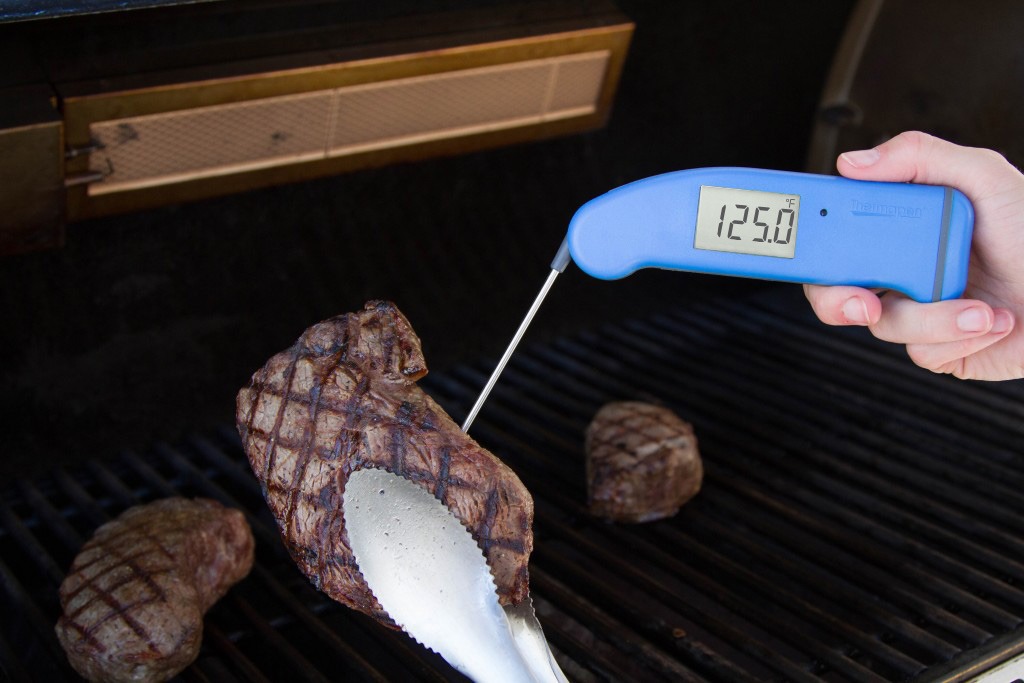
When it comes to smoking, there’s a sweet spot that every smoker should aim for. It’s the optimum temperature to get the most out of your smoke session. Knowing how to find and hit this zone can take some practice, but once you do, you’ll be in flavor heaven!
The first step is getting familiar with your setup. Different smokers have different temperatures they work best at, so do some research on yours before going further. Once you know what works best for you, start slowly adjusting the heat until it falls into the range suggested by manufacturers or other folks who’ve used your smoker.
Once you find that magical area between too hot and too cold, sit back and relax as all kinds of deliciousness starts pouring out! You’ll get more pronounced flavors from the meat along with an incredibly smoky smell that will make everyone around jealous. All this without having to worry about burning everything up or having food come off raw… just pure perfection!
Benefits Of Smoking Meats
Smoking meat is an art. It’s a great way to bring out the flavor of your favorite cuts, add smokiness and tenderness, and show off your skills in the kitchen. Plus, it looks pretty dang impressive!
When you smoke something, you’re slowly cooking it with low heat and wood smoke over time. This helps break down tough muscle fibers in certain meats like pork shoulder for pulled pork or brisket for Texas-style barbecue. The result? A juicy, flavorful meal that’s hard to beat.
Here are some other benefits of smoking meats:
- Slow cooking keeps moisture locked into the meat so it doesn’t dry out during cooking.
- Smoking adds natural preservatives that help keep foods fresh longer than regular cooking methods.
- You can infuse different flavors by experimenting with different types of woods – hickory gives a classic BBQ flavor while cherry adds sweetness and depth to poultry dishes.
- Meats cooked on a smoker tend to be juicier than those done with traditional grilling methods due to the lower temperatures used in smoking.
Tips for Leveraging Your Smoker
When it comes to smoking meat, there are a few tips that can help you make the most of your smoker and achieve delicious results every time.
- Choose the right type of smoker for your needs. Propane smokers are great for those who value convenience, while Pellet Grills offer the benefit of using nut wood pellets to infuse your meat with flavor. Ceramic smokers and bullet smokers are also great options for those who want to maintain stable temperatures and consistent heat for a rich flavor.
- Keep an eye on the temperature. Use a temperature gauge to monitor the chamber temperature and make sure it stays within the optimal range for smoking. This will ensure that your meat cooks evenly and develops the desired smoky flavor.
- Use meat probes to check the internal temperature of your meat. This will help you determine when it’s done and prevent overcooking or undercooking.
- Adjust the air vent to control the flow of smoke and maintain a steady temperature. This will allow you to create a perfect smoking environment for your meat.
- Use the smoker lid to trap the smoke and heat inside the smoking chamber. This will help your meat develop a rich smoky flavor and stay moist and tender.
- Keep smoking times in mind. Different types of meat require different smoking times, so make sure to do your research and adjust your smoking time accordingly.
- Don’t be afraid to experiment. Try different types of wood, such as hickory or mesquite, to add a unique flavor to your meat. You can also try smoking other foods, such as vegetables or cheeses, to create new and exciting dishes.
- Consider using a Green Egg or other ceramic smoker for a versatile and efficient smoking experience. These smokers are known for their ability to maintain stable temperatures and produce delicious results.
- Remember that smoking isn’t just for the outdoors. You can also use indoor smokers to create delicious smoked dishes all year round.
By following these tips, you can make the most of your smoker and create delicious smoked dishes that are sure to impress.
Summary
Smoking meat is a time-honored tradition that offers a rich, smoky flavor that cannot be replicated by other cooking methods. While there are many kinds of smokers available on the market, including standard grills and indoor smokers, some of the most popular choices are Pellet Grills, which offer a convenient and efficient smoking experience.
To achieve the perfect smoked dish, it’s important to keep in mind the rule of thumb for smoking: slow and low. This means maintaining a constant temperature and smoke flow to ensure that the meat cooks evenly and absorbs the smoky flavor. You should also consider the kinds of wood you use, as different types can impart different flavors.
Whether you’re smoking a rack of ribs, slabs of meat, pork chops, or any other meat, it’s essential to keep an eye on the smoke times and adjust the air dampers to control the heat rise and radiant heat.
Of course, it’s also important to prioritize safety while smoking meat. Always make sure that your smoker is clean and that there is no buildup of carbon monoxide. And remember to use a cooking rack to keep the meat off the bottom of the smoker, which can be too hot and lead to uneven cooking.
In summary, smoking meat is a delicious and satisfying way to cook meat, and with the right tools and techniques, anyone can achieve a perfect, clean smoke. Whether you prefer Pellet Grills or another type of smoker, it’s important to remember the key principles of smoking: slow and low, constant temperature, and attention to safety. So fire up your smoker and get ready to enjoy some of the best-tasting meat you’ve ever had!
Smoker Articles You Want To Read
Vertical vs Offset Smoker: Choosing the Best Smoker for Your BBQ Needs
How To Insulate Your Smoker (Thermal Blanket v.s Firebox Insulation)
Electric Smoker Vs Wood Smoker (Flavor, Cost, Temp)
Vertical vs Horizontal Smoker: Which Is Right For You?
Best All-Around Smoker Under $1000 in 2023 (Top 4 Options)
Smoking Meat 101: The Top Beginner Smokers on the Market
Guide to Choosing the Right Smoker: Which Is the Best Type for You?

Shara @The Bird BBQ
Shara loves to experiment with different flavors and techniques when it comes to BBQ. She has been perfecting her craft for years and loves hosting backyard BBQs with friends & family. She often comes up with creative recipes that her guests rave about.

